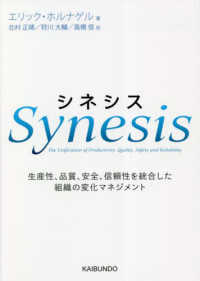- ホーム
- > 洋書
- > ドイツ書
- > Humanities, Arts & Music
- > Linguistics
- > general surveys & lexicons
Full Description
This book explores how Esperanto - often regarded as a future-oriented utopian project that ended up confined to the past - persists in the present.








